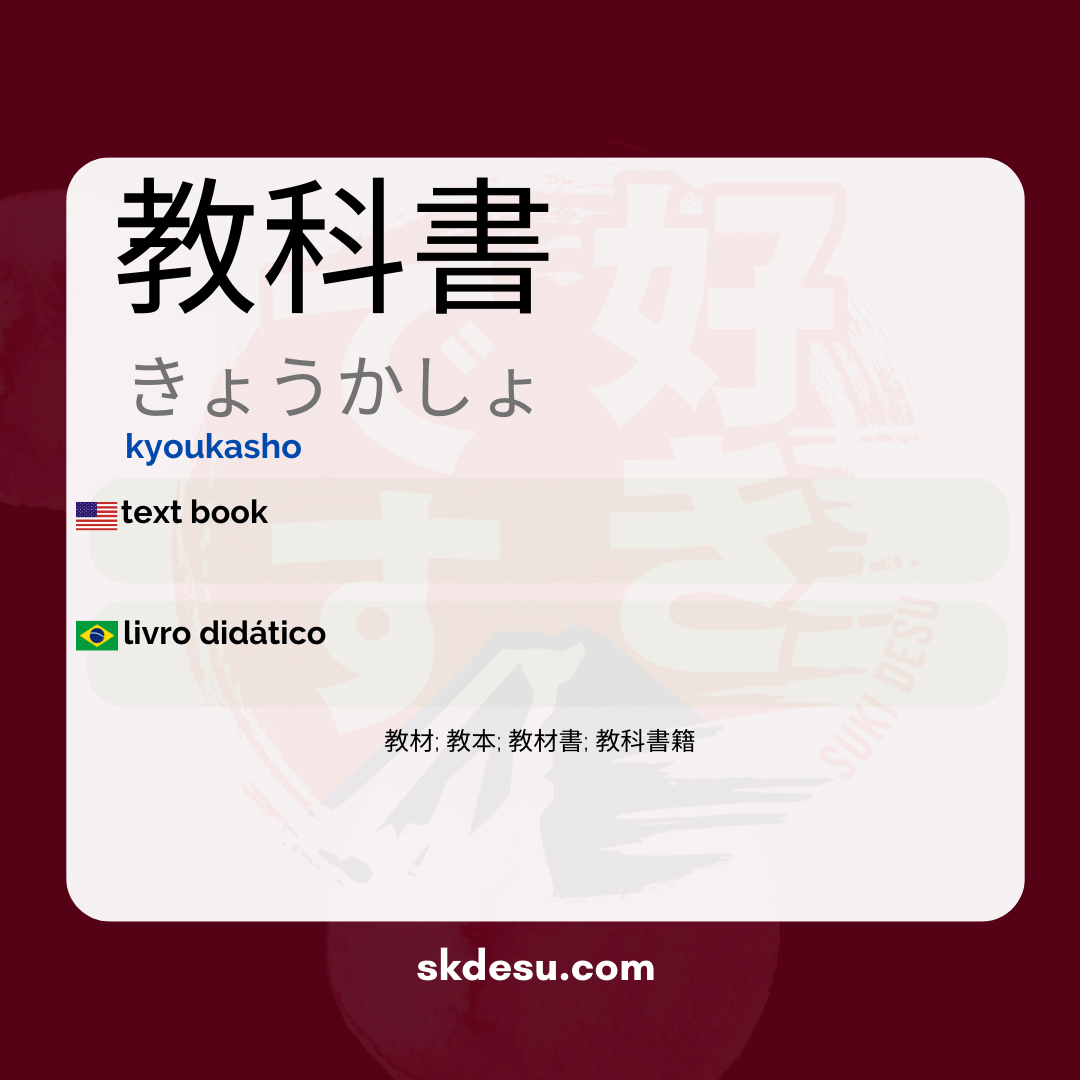Translation and Meaning of: 教科書 - kyoukasho
The Japanese word 教科書[きょうかしょ] is essential for anyone studying the language or interested in Japanese culture. If you've ever wondered what it means, how to use it, or even what its origin is, this article will answer these and other questions. Here, we will explore from the basic meaning to curiosities about its usage in everyday Japanese.
Besides being a common word in academic environments, 教科書 has interesting particularities that make it unique. Whether for creating flashcards in Anki or understanding its context in sentences, knowing this expression in depth can facilitate your learning. Let's start by uncovering its meaning and then dive into details that go beyond the literal translation.
Meaning and usage of 教科書
教科書 is composed of three kanjis: 教 (teaching), 科 (subject), and 書 (written). Together, they form the word that means "textbook" or "study material." Unlike other terms for "book," such as 本 (hon), 教科書 is used specifically for educational materials, like those used in schools and courses.
In Japan, 教科書 are often associated with the rigorous educational system. They follow guidelines from the Ministry of Education and are distributed for free in public schools. This context gives the word significant cultural weight, representing not just an object, but part of the students' education.
Origin and structure of kanjis
The origin of 教科書 dates back to the Meiji period (1868-1912), when Japan modernized its educational system. The term emerged to designate the standardized books that accompanied the new school subjects. The combination of the kanjis was not random: each one reflects an essential part of the concept.
The kanji 教, for example, is composed of 孝 (filial) and 攵 (the action of striking), symbolizing the idea of transmitting knowledge through discipline. Meanwhile, 科 represents categories or divisions, while 書 refers to writing and records. This structure helps to understand why the word is so specific in its meaning.
Tips for memorizing and using correctly
An effective way to memorize 教科書 is to associate it with concrete situations. Think of scenes from animes or dramas that show Japanese classrooms – it's likely that the books used by the characters are 教科書. This visual association can firmly embed the word in memory in a more natural way.
When using the word, remember that it does not apply to any type of book. Magazines, novels, or technical manuals have different names. If you are specifically talking about the material used in schools or Japanese language courses, then 教科書 is the correct choice. This precision is valued in the language.
Vocabulary
Expand your vocabulary with related words:
Synonyms and similar words
- 教材 (Kyōzai) - Didactic material used in educational contexts.
- 教本 (Kyōhon) - Textbook, usually a guide or teaching manual.
- 教材書 (Kyōzai-sho) - Didactic literature refers to books that contain educational materials.
- 教科書籍 (Kyōkashoseki) - Textbooks, focused on specific areas of study.
Related words
Romaji: kyoukasho
Kana: きょうかしょ
Type: Noun
L: jlpt-n3
Translation / Meaning: textbook
Meaning in English: text book
Definition: Teaching materials used in school education. A book used to indicate the content of the classes and standards of instruction.
Quick Access
- Vocabulary
- Writing
- Sentences
How to Write in Japanese - (教科書) kyoukasho
See below a step-by-step guide on how to write the word by hand in Japanese. (教科書) kyoukasho:
Example Sentences - (教科書) kyoukasho
See below some example sentences:
Kyōkasho o yonde benkyō shimashou
Let's read the book and study.
Let's read the book and study.
- 教科書 - textbook
- を - direct object particle
- 読んで - conjunctive form of the verb "to read"
- 勉強 - studying
- しましょう - polite form of the verb "to do"
Kyōkasho o kaimashita
I bought a textbook.
I bought a book.
- 教科書 (kyoukasho) - textbook
- を (wo) - direct object particle
- 買いました (kaimashita) - I bought
Other Words of this Type: Noun
See other words from our dictionary that are also: Noun

